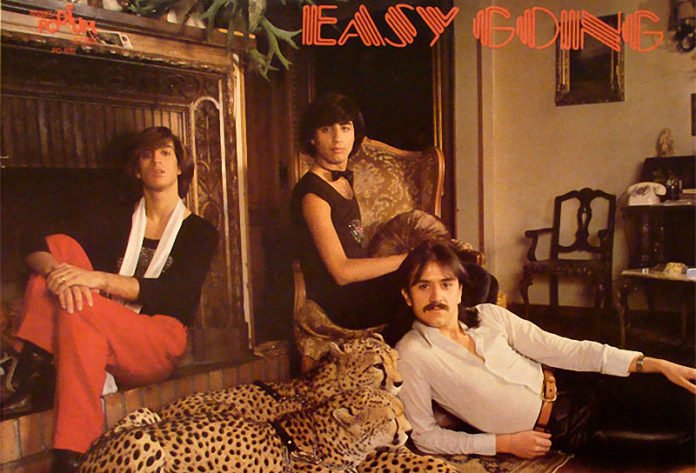Gems: Fear by Easy Going (1979)
A prog musician walks into a gay bar… and disco turns into Italo
Gems is the Guerrilla Bizarre series that brings you special records worth (re)discovering. In these features you'll find forgotten albums by celebrated artists; promising releases that didn’t get the attention they deserved; surprising, underlooked, and plain cool stuff from the past.
I’m fairly sure that, when it debuted in the Italian scene in 1978, Easy Going was considered just another vapid dance band. I mean, of course it was that too: it was fronted by campy lip-syncing dancers and performed on national tv enjoying moderate chart success, in Italy and in the States. But as it happens, there was something more behind the lycra suits and the stylish mustache, something that allowed Easy Going to craft music that stands the test of time to this day and testifies the transition from classic disco to the synth-based genre that would become known worldwide as Italo.
Easy Going was born out of two worlds meeting. The band took its name from one of the most popular disco gay clubs in downtown Rome at the time, which unfortunately doesn’t exist anymore; it was classy and decorated with mosaics inspired in equal part by Byzantine art and Tom of Finland illustrations. Paolo Micioni was its resident DJ before joining the band as frontman and public face.
However, somebody else was at the helm of the project behind the scenes: producer, keyboardist and arranger Claudio Simonetti. Claudio had already had a successful career in the previous decade as a member of Goblin, famous for their prog rock horror movie soundtracks. It’s not clear what made Simonetti decide to switch genres: the dance scene was becoming very profitable back then, but in later interviews he would recall with passion his days composing disco. What’s sure is that he brought to the table his ability to create masterful compositions that went beyond the pop song structure; as well as his knowledge of the technology, needed to push the sound forward.
“there was something more behind the lycra suits and the stylish mustache”
The first album produced a hit - “Baby I Love You” - rumored to have been played by Mancuso at The Loft, but we can otherwise remember it as pretty standard disco. Things changed with 1979’s Fear. Here, it’s clear from the start that Simonetti wants the electronic elements to mix organically with the rest: the robotic synthesizer and the laser beams of “I Strip You” are the backbone of the track from start to finish; percussion, bass, guitar, strings and brass are laid over it one by one to create this spacy yet neurotic sound. Perfect for the ambivalent narration of a song about forcible sexual conquest and paranoia about how the narrator’s masculinity is perceived.
However, the title track is the real high point of the record. A thumping beat and a stern bassline lure us into a darker side of the dancefloor, and although pads fade in like moving beams of light, they are more confusing than revealing. The shuffling hi-hats are there, but we’re away from the feel-good sensations disco should provide. The lyrics this time tell a story of dominance and submission, and recount the sub’s erotic sense of hopelessness before his lover’s actions. We do get a short relief when the horns kick in, but the synth and bass groove grabs us back in, until the theatrical finale.
Side B is more conventional, if we consider conventional dedicating a song to yourself (the luscious “To Simonetti”), of course; and while “Put Me In The Deal” is in classic disco style, its grooves and breaks and solos are irresistible and it should be perfect material for countless edits and remixes. The project disbanded not long after and Simonetti tried to go full electro with his moniker Capricorn, after which he returned to his rock roots.
All in all Easy Going were not groundbreakers, nor inventors: when Fear came out Moroder had already produced the world famous “I Feel Love”. Instead, with their heterogeneous origin, Easy Going helped to normalize the usage of synths as the basic elements of a dance track, and represent the middle ground between what disco music was until then, and the futuristic, electronic sound that would be known as Italo.
Words by Alessandro Cebrian Cobos


